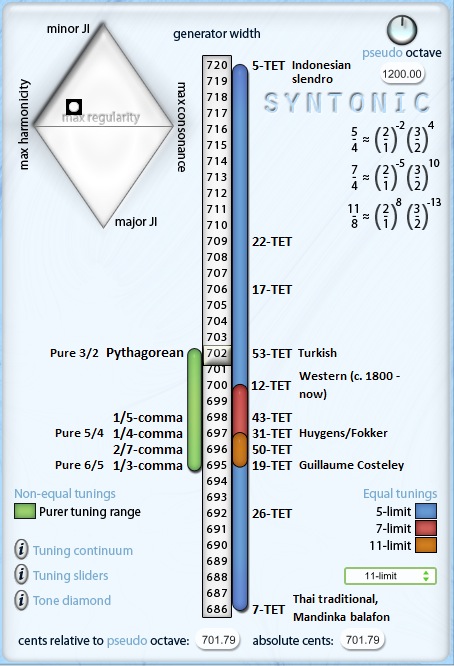

About Tuning SlidersA tuning slider (like that shown below) controls the tuning of every note on the keyboard in an ordered and predictable fashion. It does this by changing the size of one of the generators in a two-dimensional (2-D) regular tuning system.
A 2-D regular tuning system is the set of all intervals that are created by stacking two intervals called generators. For example, if one generator approximates an octave (about 1200 cents) and the other generator approximates a perfect fifth (about 700 cents) the resulting tuning system contains a recognisably diatonic scale and contains a large number of major and minor triads. A tuning system can have any number of dimensions, but 2-D tuning systems are particularly useful because:
The main tuning slider is used to change the size of beta, which has a consistent effect on the size of all intervals in the tuning continuum. The position of the tuning slider, therefore, affects the tuning of all the intervals and triads in the system (see purer tuning) as well as the sizes of every step in every scale (see ordinal tuning ). Manipulating the position of the slider during performance also gives novel expressive power. |
©2008 William Sethares; site design by Anthony Prechtl |